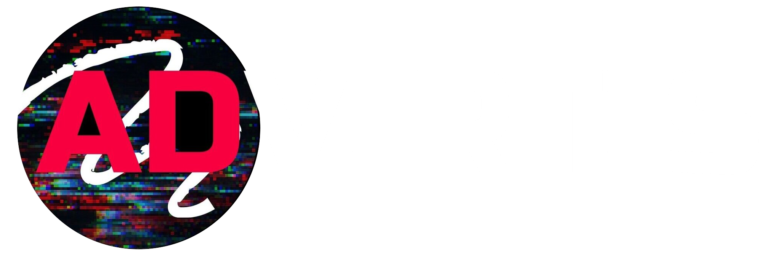White label PPC services allow agencies to offer premier advertising solutions without maintaining their own PPC teams, focusing on core strengths while leveraging external expertise. These agencies benefit from expert resources, cost efficiencies, and broader service offerings. Understanding white label PPC pricing models, like flat fees or performance-based structures, is crucial for successful partnerships, enabling competitive and profitable marketing solutions. This empowers agencies to expand their services and succeed in digital marketing.
Introduction to White Label PPC Services

White label PPC (Pay-Per-Click) services have become an integral part of the digital marketing world, providing agencies with the opportunity to offer top-notch advertising solutions without having to build or maintain their own PPC teams. These services allow agencies to focus on enhancing their core capabilities while leveraging the expertise of white label providers. This collaboration ensures that clients receive effective and optimized PPC campaigns, leading to improved performance and satisfaction.
White label PPC agencies often operate behind the scenes, enabling their partner agencies to present these services under their own brand. This seamless integration offers agencies several advantages, including access to expert resources and advanced tools, cost efficiencies, and expanded service offerings without the overhead associated with maintaining an in-house PPC department. By utilizing white label solutions, agencies can deliver comprehensive marketing services and generate added revenue streams.
As agencies dive into the realm of white label PPC services, understanding the available pricing models is crucial to creating a successful partnership. White label PPC providers typically offer a range of pricing structures, each designed to cater to different agency needs and client expectations. Choosing the right pricing model not only ensures a smooth collaboration but also enhances the agency’s ability to offer competitive and profitable marketing solutions.
Below is a summary of the common models of white label PPC pricing:
| Pricing Model | Description |
|---|---|
| Flat Fee | A fixed monthly fee regardless of ad spend or performance |
| Percentage of Ad Spend | Charges based on a percentage of the total ad spend |
| Management Fee Plus Percentage | A basic fee with an additional charge based on ad spend |
| Performance-Based | Fees linked to achieving specific performance targets |
| Tiered Pricing | Different fee levels based on specific criteria or milestones |
| Hybrid Models | A combination of multiple pricing structures |
Each model serves a unique purpose, tailored to the varied demands of agencies and their clients. Understanding these pricing models helps agencies select the most effective strategies for their business objectives and client satisfaction. This knowledge empowers agencies to enhance their service portfolio and achieve greater success in the competitive digital marketing landscape.
Understanding PPC Pricing Models
Pay-Per-Click (PPC) advertising has become a critical tool for agencies looking to maximize client reach and campaign effectiveness. When it comes to white label PPC services, understanding the various pricing models is crucial for agencies to make informed decisions that align with their business goals and client expectations.
PPC pricing models vary, offering different approaches to how services are charged. This diversity allows agencies to choose a model that best fits their operational needs and their clients’ objectives. Each model has its unique structure, providing flexibility and options to cater to diverse markets and clients.
The first option is the Flat Fee Pricing Model. This model simplifies budgeting for clients and provides agencies with predictable revenue. It involves charging a fixed fee for the services over a specified period, regardless of ad spend or campaign results.
Another common model is the Percentage of Ad Spend. In this structure, agencies charge a fee based on a percentage of the client’s total ad spend. This approach aligns the interests of the agency with the client, as increasing ad spend can potentially increase both parties’ returns.
The Management Fee Plus Percentage Model combines the elements of fixed fees and variable costs. It involves a base management fee along with a percentage of the ad spend. This hybrid model ensures agencies cover their operational costs while also benefiting from scaling ad budgets.
Additionally, the Performance-Based Pricing model ties the fees to campaign results, such as leads generated or sales achieved. This model presents a compelling value proposition for clients, as agencies are incentivized to deliver tangible outcomes.
The Tiered Pricing Model involves charging fees based on different service levels or ad spend brackets. This model provides clients with the flexibility to choose services that match their budget and growth stages, allowing for scalability.
Lastly, Hybrid Pricing Models are often custom-tailored to incorporate multiple elements from the above models. They offer a tailored approach that can adapt to complex client needs and dynamic market conditions.
Choosing the right PPC pricing model can significantly impact an agency’s relationship with its clients and its bottom line. By understanding these models and their operational mechanisms, agencies can better align their services with client expectations and market trends.
Flat Fee Pricing Model: An Overview

In the world of White Label PPC services, the Flat Fee Pricing Model presents itself as a straightforward and predictable option. This model is characterized by agencies charging a fixed rate for their services, regardless of the client’s ad spend size or campaign complexity.
The predictability of costs is one of the key advantages of using a Flat Fee Pricing Model. Agencies know exactly what they will pay each month, which facilitates budgeting and financial planning. This model helps in maintaining a stable cash flow for agencies, ensuring consistent financial management without unexpected fluctuations.
However, finding the perfect flat fee requires a detailed understanding of the expected workload, resources invested, and value provided. By clearly defining the scope of work and deliverables upfront, agencies can set a fee that aligns with their business strategy and operational costs.
Below is a table showcasing the typical components included in a Flat Fee Pricing Model:
| Service Component | Description |
|---|---|
| Campaign Setup | Initial setup and configuration of PPC campaigns |
| Strategy Development | Crafting a customized strategy to meet the client’s objectives |
| Ad Creation | Design and copywriting for effective advertisements |
| Performance Tracking | Regular analysis of campaign metrics and performance |
| Reporting | Providing periodic reports to showcase results and insights |
The Flat Fee Pricing Model is particularly beneficial for agencies working with clients who have set budgets or prefer financial transparency. Simplifying the billing process ensures a seamless experience for both the agency and its clients, building trust and fostering long-term relationships.
Overall, the Flat Fee Pricing Model is an attractive option for white-label agencies seeking clarity and consistency in their pricing structure. By delivering well-defined services and maintaining transparent communication, agencies can leverage this model to achieve sustainable business growth.
Percentage of Ad Spend Model

The Percentage of Ad Spend Model is a popular pricing strategy in the white-label PPC landscape that aligns agency earnings with ad expenditure. In this model, the agency charges clients a percentage of their total ad spend, which creates a dynamic where both the agency’s income and the client’s costs scale with the size of the ad investment.
One of the key attractions of this model is its inherent scalability. As clients increase their advertising budgets to capture more leads or clicks, the agency’s revenue grows proportionally. This creates a win-win situation where both parties are invested in the success of the campaign. A well-managed ad campaign that generates positive results justifies a larger ad budget, which in turn increases the agency’s earnings without the need for renegotiating fees.
According to industry data, many agencies find that clients appreciate the transparency of this model. Clients can clearly see how their ad spend translates into agency fees, thus fostering trust. This approach also encourages agencies to focus on maximizing the effectiveness of the ad budget, aligning their incentives with those of their clients.
Furthermore, this model can streamline the budgeting process for clients. Knowing that agency fees will align naturally with their ad spend allows clients to better plan their marketing budgets according to their business goals. The flexibility of this approach means it can accommodate businesses of various sizes, from small enterprises to large corporations.
While the percentage charged can vary widely based on industry standards, typical fees range from 10% to 20% of ad spend. Agencies typically establish these rates based on their levels of expertise, competitive positioning, and the value they provide to clients.
- Scalable income aligned with results
- Enhanced transparency and trust
- Simplified budgeting for clients
- Focus on maximizing ad effectiveness
Overall, the Percentage of Ad Spend Model presents a compelling pricing strategy for both agencies and clients, fostering a collaborative environment focused on achieving the best possible outcomes in pay-per-click campaigns.
Management Fee Plus Percentage Model
The Management Fee Plus Percentage Model is a popular pricing strategy in white label PPC services, combining a fixed management fee with a variable percentage of ad spend. This model is designed to offer both stability and scalability, ensuring that agencies can manage their costs effectively while also aligning the service provider’s incentives with the success of the campaign.
In this model, the fixed management fee serves as a stable source of revenue, covering the basic operational costs associated with managing PPC campaigns. This fee is predetermined and agreed upon by both parties, and it provides predictability in budgeting, making it easier for agencies to forecast expenses.
The percentage of ad spend component ensures that the service provider remains motivated to optimize the campaign performance, as their earnings are directly tied to the volume of the ad spend. This creates a mutually beneficial relationship where both the agency and the service provider aim for increased campaign success, leading to enhanced results for the end client.
One of the main attractions of this model is the balance it provides between financial security and performance-based incentives. Agencies appreciate the reliability of the fixed fee, while clients and service providers can benefit from the potential for increased investment and improved campaign outcomes.
Agencies looking to implement this pricing model often consider establishing transparent communication with their white label partners to determine fair management fees and competitive percentages. This collaboration supports the alignment of goals and ensures all parties work towards common objectives, ultimately increasing client satisfaction and retention.
Key benefits of the Management Fee Plus Percentage Model include:
- Predictable Revenue Streams: The fixed management fee offers financial predictability.
- Aligned Incentives: The percentage of ad spend incentivizes optimal campaign performance.
- Flexibility and Scalability: As campaigns grow, the percentage component allows for scalable solutions.
- Enhanced Client Relationships: Improved transparency and performance can lead to better client retention.
This model is a strategic choice for many agencies, allowing them to manage their finances efficiently while maximizing the impact of their PPC campaigns.
Performance-Based Pricing
Performance-based pricing is gaining traction in the white label PPC industry as a compelling option for agencies striving to align incentives with outcomes. This model focuses on rewarding performance achievements, which can motivate providers to optimize campaigns effectively.
Performance-based pricing leverages the concept of paying service providers based on the results they achieve. This approach is notably attractive because it underscores accountability and places the emphasis on meeting specific performance metrics. Metrics may include conversion rates, cost-per-acquisition, or other predefined goals that reflect the campaign’s success. By emphasizing results, this pricing model fosters a productive partnership between agencies and their white label PPC providers.
One of the critical advantages of performance-based pricing is its flexibility. Agencies can tailor performance targets according to the clients’ objectives. This customization allows agencies to adapt strategies that best suit their clients’ market dynamics and business goals. An effectively crafted performance model ensures that both parties invest their resources in achieving shared success, which can enhance agency-client relationships and drive profitable results.
Encouragingly, the industry’s trend towards performance-based pricing is supported by various technology advancements. The rise of sophisticated analytics and tracking tools enables more precise measurement of campaign outcomes. These tools help delineate the specific contributions of PPC efforts to the overall success, thereby ensuring transparent evaluation of performance metrics.
Moreover, agencies that implement performance-based pricing benefit from enhanced competitiveness. By promising to deliver measurable results, they appeal more to clients looking for demonstrable ROI from their PPC investments. This approach can serve as a significant differentiator in a competitive market, helping agencies attract and retain clients who are results-focused.
Overall, performance-based pricing presents a win-win scenario for agencies utilizing white label PPC services. It effectively aligns providers with the agency’s goals, harnesses the power of analytics for performance measurement, and enhances client satisfaction through transparent and successful campaign execution.
Tiered Pricing Model
The Tiered Pricing Model is a versatile structure that has gained popularity among agencies leveraging white label PPC services. This model provides flexibility and scalability, allowing agencies to align costs with their clients’ varied ad spend levels and needs. By implementing a tiered approach, agencies can offer more personalized services while ensuring profitability across different client segments.
One of the major advantages of the tiered pricing model is its ability to accommodate a wide range of budgets. Agencies can design multiple tiers, each catering to different ad spend brackets. This allows clients with smaller budgets to access essential services at competitive rates while offering more comprehensive packages to clients with larger budgets. Some agencies may define tiers based on ad spend ranges such as ‘up to $5,000’, ‘$5,001-$15,000’, ‘over $15,000’, etc. This categorization helps in organizing resources and providing targeted service offerings that match the complexities and demands of each tier.
Additionally, the tiered pricing model often includes add-on services, allowing agencies to enhance their service packages with additional features that clients can opt into based on their specific needs. This can include services like advanced reporting, competitor analysis, or more frequent campaign optimizations. These add-ons can act as a value proposition for clients who are looking to maximize their PPC investment while still controlling costs.
The effectiveness of the tiered pricing model is evident from its ability to create transparent pricing structures that can be easily communicated to prospective clients. Agencies that adopt this model often experience an increase in client retention rates as clients appreciate knowing exactly what they get at each service level. Moreover, it facilitates easier scaling of services as clients’ advertising needs grow, allowing agencies to grow in tandem with their clients.
Implementing a tiered pricing model effectively requires careful planning and a thorough understanding of market demands. Agencies often undertake extensive market research to define appropriate tiers and pricing structures that are both competitive and profitable. This approach ensures that they remain attractive to clients across various industry sectors, thereby expanding their market reach.
Overall, the tiered pricing model is a strategic choice for agencies looking to offer white label PPC services in a manner that is adaptable, client-centric, and conducive to long-term relationships.
Hybrid Pricing Models
The concept of Hybrid Pricing Models in white label PPC services is a progressive approach that combines elements from various traditional pricing structures. This method allows agencies to tailor their services to better meet client needs while optimizing their own operational efficiencies.
A hybrid model can amalgamate aspects of flat fee, percentage of ad spend, and even tiered pricing methodologies. By integrating different pricing components, agencies can create a more adaptable pricing strategy that can suit various client requirements and expectations.
Advantages of Hybrid Pricing Models
One of the primary advantages of hybrid models is their flexibility. Agencies can customize pricing to better align with a client’s specific budget and marketing goals. This adaptability can improve client satisfaction and foster long-term relationships.
Additionally, hybrid pricing can cater to a wider range of clients. By offering a mix of pricing options, agencies can effectively serve both small businesses with limited budgets and larger enterprises with extensive advertising needs.
Common Components in Hybrid Models
Here’s a breakdown of common elements that might be combined in hybrid pricing models:
| Component | Description |
|---|---|
| Flat Fee | A fixed charge for standard service offerings. |
| Percentage of Ad Spend | A variable fee based on the volume of the ad budget. |
| Performance Incentive | Additional charges based on campaign success metrics. |
Successful Implementation Examples
Several agencies have successfully implemented hybrid pricing structures to great effect. By leveraging the strengths of various models, they streamline processes, enhance client satisfaction, and maintain competitive pricing. For instance, an agency might charge a base flat fee for management services, add a percentage of ad spend for larger campaigns, and include performance incentives for reaching specific KPIs.
Adopting a hybrid pricing model, agencies can benefit from the comprehensive range of customization options, making it an attractive solution for striving toward both maintaining a healthy bottom line and ensuring expanded client service offerings.
Benefits of Choosing the Right Pricing Model
Choosing the right White Label PPC pricing model is crucial for agencies looking to optimize their services and maximize profitability. There are several significant benefits associated with selecting the most suitable pricing structure, each contributing to enhanced agency performance and client satisfaction.
One of the primary benefits is improved financial predictability. By selecting a pricing model that aligns with the agency’s specific business needs, it becomes easier to forecast revenue and manage budgets effectively. This clarity in financial planning helps agencies to scale their operations seamlessly.
Moreover, the appropriate pricing model can lead to increased transparency and trust with clients. When agencies utilize a pricing structure that clearly communicates costs and value, clients are more likely to appreciate the tangible benefits they receive. This fosters a stronger partnership and opens avenues for long-term engagements.
Additionally, agencies benefit from enhanced efficiency and focus. By having a clear understanding of costs and performance metrics associated with different models, agencies can better allocate resources and attention to strategies that deliver the most impact. This targeted approach conserves time and effort, allowing agencies to deliver high-quality results consistently.
A well-chosen pricing model also facilitates better competitiveness in the market. Agencies can differentiate themselves by offering customized and value-driven pricing strategies that appeal directly to potential clients. This competitive advantage is crucial in attracting and retaining clients in a crowded marketplace.
Lastly, the right pricing model supports agility and adaptability. As the digital advertising ecosystem evolves, agencies equipped with flexible pricing structures can swiftly adjust their strategies and offerings, ensuring they remain relevant and capable of meeting emerging client needs effectively.
In conclusion, selecting the appropriate White Label PPC pricing model provides agencies with a solid foundation for growth, client satisfaction, and sustained success. Embracing the correct approach not only enhances financial stability but also strengthens client relationships and empowers agencies to excel in the competitive digital advertising landscape.
Factors to Consider When Selecting a Pricing Model
When selecting a pricing model for white label PPC services, agencies must weigh several critical factors to make informed decisions that align with their strategic goals and client needs. A well-chosen pricing model not only optimizes financial outcomes but also strengthens client satisfaction and retention. Here are some of the key factors to consider:
Agency Size and Scale
Agency size and scale can substantially impact the suitability of a pricing model. Larger agencies may benefit from models that offer scalability, such as the percentage of ad spend model, where the revenue grows with increased client ad budgets. Smaller or boutique agencies, on the other hand, might find a flat fee model more predictable and easier to manage.
Client Preferences and Expectations
Understanding client preferences and expectations is crucial. Some clients might prefer a transparent and predictable pricing structure like a flat fee, while others might appreciate the flexibility and lower upfront costs of performance-based pricing. Agencies should ensure that their chosen model aligns with what their clients value most to build trust and long-term relationships.
Complexity of Campaigns
Campaign complexity often determines the level of effort required by the PPC agency. For complex campaigns that demand significant expertise and time, a management fee plus percentage model might better compensate for the resources and skills provided. Conversely, simpler campaigns might not justify a high percentage of spend or management fees.
Market and Industry Trends
Staying informed of market and industry trends is beneficial. Shifts in digital marketing practices or consumer behavior can influence which pricing models are currently advantageous. Agencies should remain adaptable and consider models that can accommodate or exploit these trends effectively.
Margin and Profit Objectives
Margin and profit objectives are inevitably among the primary considerations. Agencies need to select a pricing model that meets their financial goals while being competitive in the market. Both tiered pricing and hybrid models can offer pathways to optimize margins by leveraging diversified pricing strategies.
Technological and Analytical Capabilities
The agency’s technological and analytical capabilities may dictate certain pricing model options. Agencies equipped with advanced analytics and automation tools can efficiently manage performance-based models due to their ability to optimize and track campaign success more effectively.
Overall, selecting the appropriate white label PPC pricing model requires a thorough evaluation of these factors, considering agency capabilities, client needs, and market dynamics to support sustained agency growth and client satisfaction.
Successful Case Studies of Agencies Using White Label PPC

White label PPC services have gained significant popularity among agencies seeking to expand their service offerings without the need to build in-house expertise from scratch. By partnering with white label providers, agencies have been able to improve client satisfaction and enhance their own revenue streams. Several case studies highlight the successful integration of white label PPC services using various pricing models, which have effectively driven growth for these agencies.
One notable example involves an agency that adopted a flat fee pricing model while working with a white label provider. This approach provided the agency with predictability in costs and allowed for straightforward billing processes for clients, leading to increased client trust and retention. The agency reported a 20% increase in their client base over the first two years of implementing this model.
Another successful instance is reflected in an agency that utilized a percentage of ad spend pricing model. This method incentivized the agency to optimize ad spend effectively and align their goals with their clients. As a result, the agency experienced a substantial increase in return on investment (ROI) for their clients, with some accounts achieving a 35% improvement in ad performance over a 12-month period. The success in delivering enhanced value led to positive word-of-mouth referrals and growth in clientele.
Moreover, agencies opting for hybrid pricing models have reported a balanced approach that caters to diverse client needs. By combining elements from different models such as management fees plus a percentage, agencies were able to offer flexible solutions tailored to each client’s specific objectives and budget constraints. This adaptability has allowed agencies to secure larger contracts and foster long-term partnerships with their clients.
Ultimately, the choice of a white label PPC pricing model plays a crucial role in an agency’s ability to leverage outsourced expertise effectively. The case studies demonstrate that selecting a pricing strategy aligned with agency goals and client expectations can result in sustainable growth and competitive advantage in the marketplace.
Trends and Innovations in White Label PPC Pricing
White label Pay-Per-Click (PPC) services continue to evolve, and staying abreast of the latest trends and innovations in pricing models is essential for agencies looking to remain competitive. The dynamic nature of the digital marketing landscape prompts constant refinement and adaptation of pricing strategies to better meet the needs of agencies and their clients.
Emergence of AI and Automation
An increasingly prominent trend in white label PPC pricing is the integration of AI and automation tools. These technologies not only enhance campaign performance by optimizing bid strategies and targeting but also streamline operations for agencies. The effective deployment of automation tools has enabled agencies to adjust their pricing models by reducing manual labor costs.
Flexible and Customizable Pricing Structures
The demand for flexibility in pricing is growing, with many agencies seeking customizable models that can adapt to their specific requirements and market conditions. These flexible pricing structures are crafted to accommodate various levels of ad spend, performance targets, and agency capabilities, allowing more tailored PPC service offerings.
Focus on Client-Centric Metrics
There is a marked trend towards pricing models that emphasize client-centric metrics, such as customer acquisition cost (CAC) and return on ad spend (ROAS). Agencies are finding value in models that are more aligned with their clients’ business goals, thus enhancing satisfaction and long-term partnerships.
Subscription-Based Models
Subscription-based pricing has started to gain traction as agencies look for stable and predictable revenue streams. This approach allows agencies to offer comprehensive PPC service bundles at a fixed monthly rate, which can lead to improved client retention and simplified budgeting for both parties involved.
Value-Based Pricing Strategies
Value-based pricing strategies are becoming more popular as agencies strive to emphasize the value they provide rather than just their costs. By focusing on the tangible benefits delivered, agencies can justify higher pricing levels and differentiate themselves in a competitive market.
In summary, to remain successful, it is crucial for agencies to stay informed about the latest trends and innovations in white label PPC pricing models. Embracing these developments enables them to offer more competitive, efficient, and appealing services to their clients, paving the way for future growth and success.
Conclusion and Future Directions
In the dynamic landscape of digital marketing, selecting the right white label PPC pricing model is crucial for agencies aiming to optimize their service offerings and profitability. With a variety of models to choose from, it’s essential for agencies to align their choice with both their clients’ needs and their own business objectives.
Looking to the future, the trend of customized and flexible pricing models is likely to grow. As technology evolves, more data-driven insights will empower agencies to offer tailored solutions that cater to the specific demands of their clients. This shift towards personalized pricing strategies can enhance agency-client relationships and drive better campaign outcomes.
Furthermore, the integration of advanced analytics and artificial intelligence into PPC strategies will likely revolutionize how agencies manage campaigns and set prices. By leveraging AI, agencies can predict and respond to market trends with greater precision, potentially leading to more competitive pricing structures that can benefit both parties.
The future also suggests that agencies might find increasing value in hybrid pricing models. These models offer flexibility by combining elements from various pricing strategies, thus providing a more adaptable approach that can adjust to the fluctuating needs of the market.
Ultimately, as the industry continues to evolve, agencies that prioritize flexibility and innovation in their pricing strategies will likely enjoy a competitive advantage. By remaining open to emerging trends and technologies, agencies can ensure they are well-positioned to meet the evolving demands of their clients while maximizing their own growth potential.
